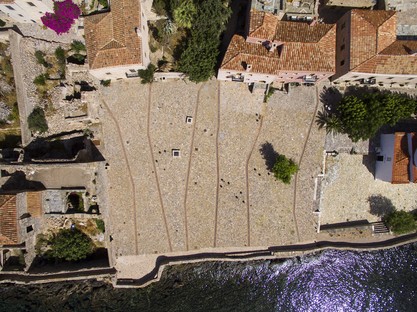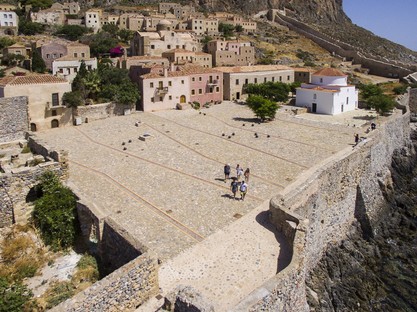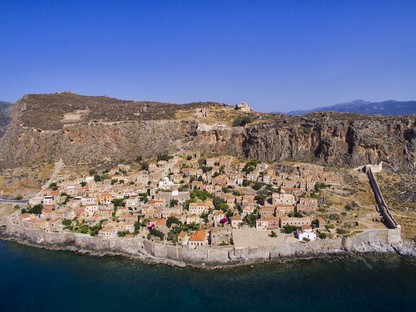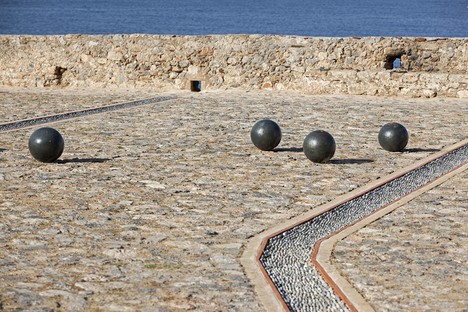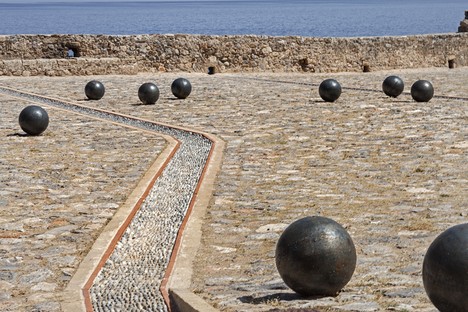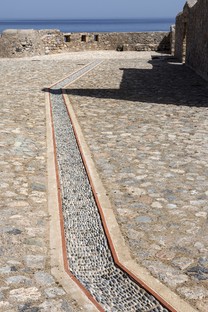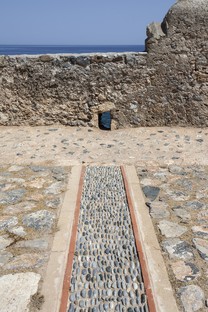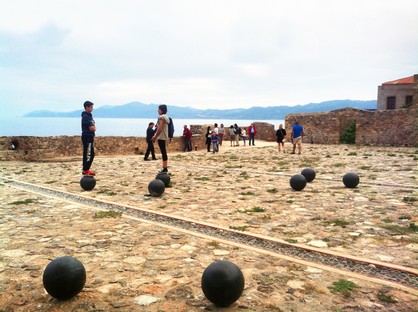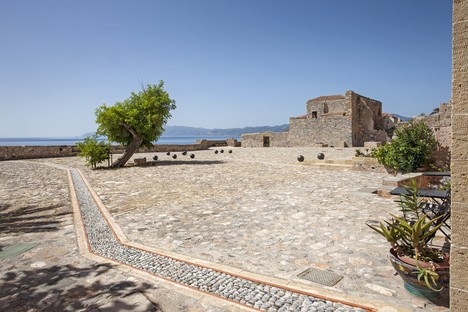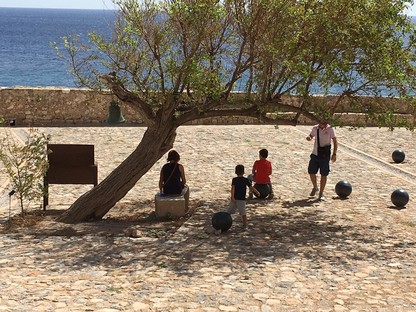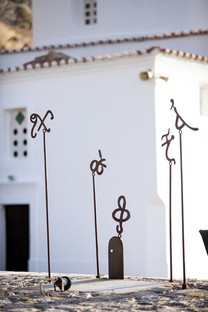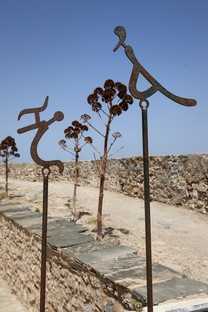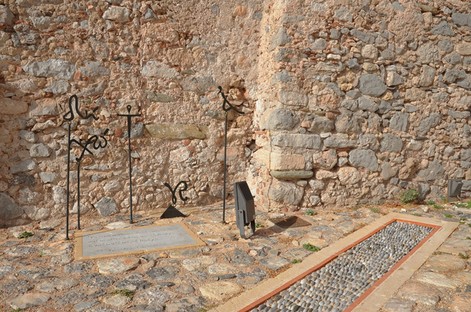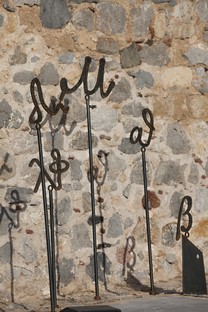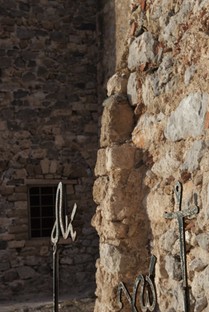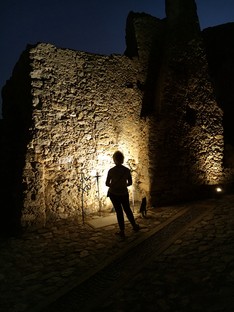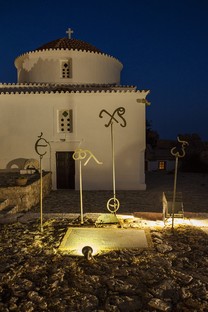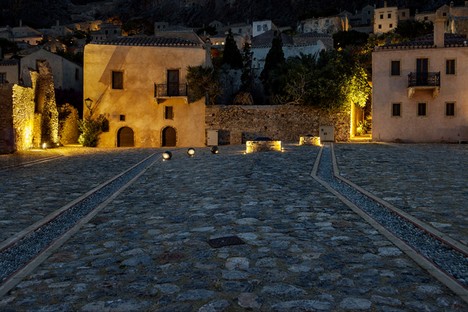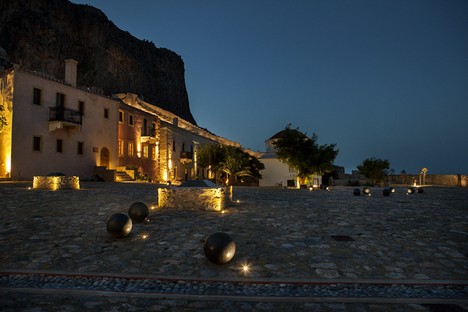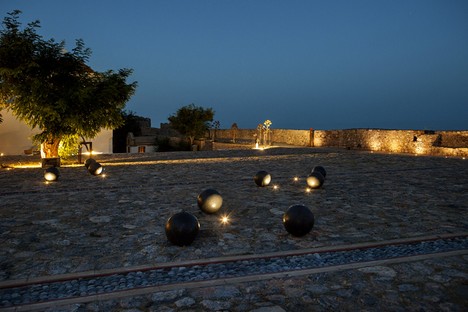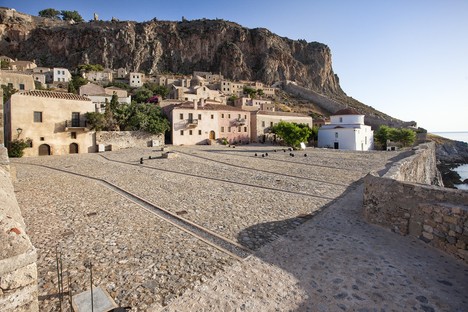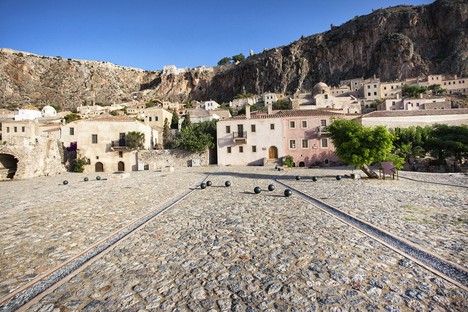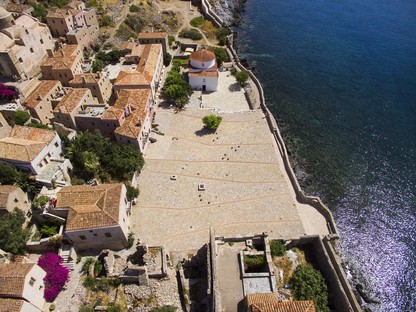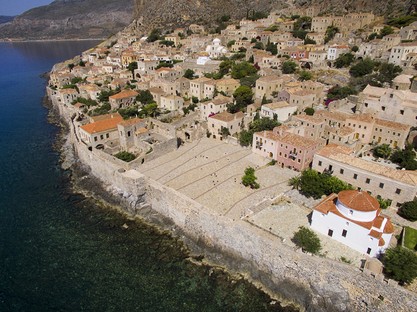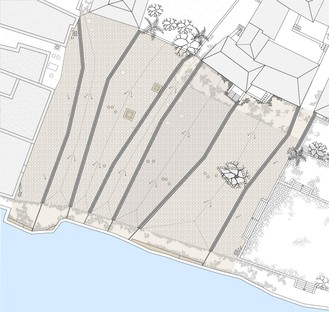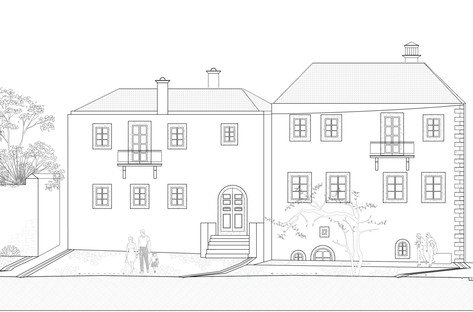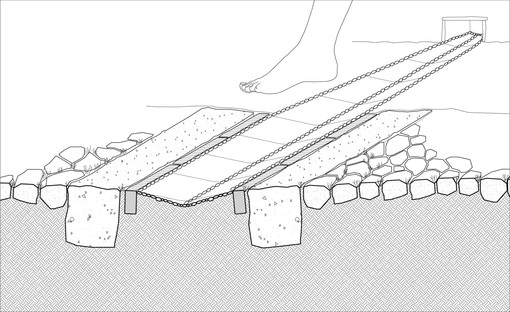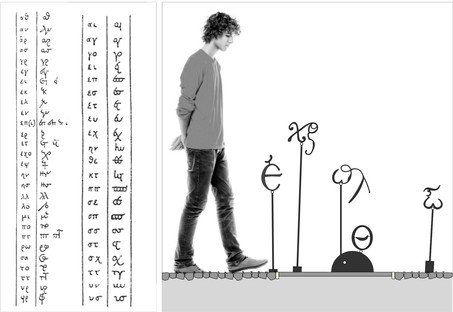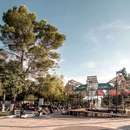08-11-2019
Moy Studio: Water paths, Monemvasia’s new square
Elena Zabeli - MoY studio,
Kostas Kostopoulos, Tilemahos Mihalas,
Monemvasia, Grecia,

The square in Monemvasia looks as though it has always been the way it is today: a flat stone surface with fine drainage channels running across it, constructed with a strong focus on local history. But in actual fact the “Water Paths” redevelopment project in an underused expanse of gravel in the centre of Monemvasia, Greece, only dates back to 2015, and was conducted by Elena Zabeli and her studio, MoY, to adapt these public spaces for new uses without altering their relationship with the past.
The project was initiated by the municipality itself, which had decided a few years earlier to redesign two public sites of great interest in this little village in the Peloponnesus. Built at the foot of a rocky promontory and connected with the Grecian coast only by a thin strip of land, Monemvasia is a fortress of medieval origin known for its tall, well-preserved walls with a single gate, on the eastern side.
The first of the ambitious projects begun by the City was redevelopment of the gateway to the castle and the square in front of it, used half as a parking lot and half as a vehicle ramp. Monemvasia is in fact a fortified area closed to all motorised vehicles, in which tiny constructions are dug right into the rock of the mountain, with streets, steps, homes and walls made of stone and only a few small squares. The exception is the big space overlooking the sea, the town’s biggest open space, sloping down to the walls built on the rocks: Chryssafitissa Square. The best-preserved houses form the backdrop to the north, the church of Panagia Chryssafitissa to the west, and a number of ruins in the castle area to the east. The second project commissioned by the City in recent years, Moy Studio’s project for the square adds value to a splendid lookout point and gives the village a large public site that may be used for public events.
While coming up with her proposal for transforming the entrance to the Castle, for which an application for a permit has now been filed, Elena Zabeli worked on the image and functions of the new square. She reports with great precision that at 12:37 on Tuesday, 17 April 2012, the architect, the archaeologist and the deputy mayor met in Chryssafitissa Square for the first time to discuss how they could change the place. All that was there at the time was land, mud, weeds, detritus and piles of stones, but the presence of the landscape, that is, the view of the sea stretching infinitely out to the horizon and the architectural surroundings, made them confident that they could change the way people perceived the site, from an anonymous space to an important town square.
The fist problem to solve and the starting point of the design concept was a merely practical question, drainage of rainwater. The topography of the square produced the drainage routes, with the crest lines on the pavement which convey and direct water into the drainage openings around the walls. This ensures that the square adapts to the land without modifying its slope, making practical use of it.
For this purpose, the architects used traditional covering materials: in the largest parts, local stone rests directly on the earth, encouraging growth of spontaneous plants to give the square a more natural look, while limestone and solid brick are used to create drainage routes and a pebble mosaic for the central drainage channel.
The drainage lines were drawn zig-zag fashion with no symmetry, simply following the most efficient slope, permitting creation of a homogeneous pavement with no drain covers that is appropriate for land sloping down to the sea. The pebbles allude to waterways and give a visual impression of the flow of the water; as Elena Zabeli says, visitors walk on gentle waves of stone interrupted by streams of gravel.
Observing the square today, its image and impact on the perspective of the village are very different from the past, but the slope down to the cliffs is still the same. Nothing has been added that could disturb the view toward the sea, only small installations intended to arouse curiosity about the history of the place. Four slabs of stone have been laid flush with the pavement in the corners of the square, engraved with verses by poet Yannis Ritsos, a native of Monemvasia, considered one of the greatest Greek poets of the twentieth century. They are surrounded by a series of linear sculptures made of black steel rods inspired by Byzantine calligraphy. In place of benches, big black cannonballs, casually “shot” here and there around the square, welcome visitors like little calligraphic punctuation marks.
Moy Studio’s Water Paths is a contemporary project in a profoundly historic context, in which the architectural approach focuses on material textures and relationship with context. All self-referential whims are abandoned to experiment with the concept of contemporary monument, coming up with a possible definition: a square that adds no new elements to its context, but ensures that the landscape emerges, in the site’s historic expression and potential as a public place.
Mara Corradi
Architects: Elena Zabeli - MoY studio
Client: Municipality of Monemvasia
Location: Monemvasia Castle, Chryssafitissa square
Gross useable floor space: 1402 sqm
Lot size: 1402 sqm
Start of work: 2012
Completion of work: 2016
Photographs: © Kostas Kostopoulos (04-23), © Tilemahos Mihalas (drone) (01-03; 24-25)
BIG SEE ARCHITECTURE AWARD 2019, Greece, Landscape and urban space
http://moystudio.gr/en










